A year on since the origins of Covid-19: what we know about how it started
By Catherine Taylor for the ABC
Analysis – This time last year – as China’s perishing winter descended across most of the country – rumours about a strange new flu were beginning to circulate in Wuhan.
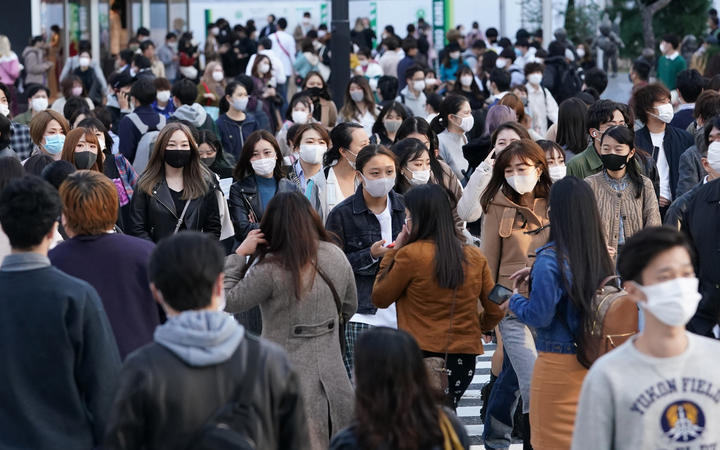
Wearing masks has now become the norm in many countries across the world amid the Covid-19 pandemic. Photo: The Yomiuri Shimbun / AFP
On China’s social media platform WeChat, users had been discussing their coughs and colds for weeks with words like “SARS” and “shortness of breath” spiking from mid-November.
By early December, a so-called “pneumonia of unknown origin” had been identified, and patients – many of them workers or customers of a well-known market – were finding their way to Wuhan’s hospitals for treatment.
The first cases of pneumonia of unknown origin were identified in Wuhan, China, in early December 2019. Little was known about the characteristics or transmission of the pathogen, identified as a novel coronavirus. #COVID19 #SARSCoV2 pic.twitter.com/VOQMWxyJdz
— NEJM (@NEJM) May 2, 2020
As we close in on 12 months of life with this pandemic – with puzzling beginnings that have led to more than 54 million global infections and 1.3 million deaths, affecting almost every nation on earth, upending economies and lifestyles, sparking political tensions – the most fundamental questions remain unanswered: Where did it come from? Who was its first victim?
The hunt for ‘Patient Zero’
These are mysteries that may never be solved, says Professor Edward Holmes, a leading virologist at the University of Sydney, and recently named NSW Scientist of the Year, who was among the first in the world to map the genome of SARS-CoV-2.
“You know, it sounds like a cliche but it’s really needle in a haystack stuff,” he says of the search for the origins of the virus. “It may actually depend on going into exactly the right cave and sampling exactly the right bat. It could be that chancy. It’s not a simple thing to do.”

A medical worker conducts blood testing on patients in Tongji Hospitai, in Wuhan on September 3, 2020, while local authorities made a visit with media to the hospital. Photo: Hector Retamal / AFP
In the movie Contagion, Gwyneth Paltrow’s character gives the impression that one dodgy meal and clever use of CCTV footage can lead us to Patient Zero and bingo, the mystery is unravelled.
Yet exactly how Covid-19 came into being, and who its first human victim was – the so-called “Index Case” – is a “hypothetical construct”, according to Prof Holmes.
“It sounds good in the movies to go back and find the person who was first exposed to the bat, but the chance of ever finding that in reality is almost zero,” he says.
That hasn’t stopped people trying.
One widely republished report suggests a 55-year-old Hubei man was the first to become infected with coronavirus exactly 12 months ago today, on 17 November. But the information has not been corroborated.
There are also suspicions the roots of the virus could have emerged even earlier.
On 18 September, Wuhan’s Tianhe Airport Customs received a report that an inbound passenger “was unwell, respiratory distress and unstable vital signs”. An early case of Covid-19? Or just a bad cold and a coincidence?
Other reports point to Spanish sewage samples from March 2019 that found fragments of Covid-19 during retrospective tests.
Just this week reports of Covid cases in Italy as early as September have been suggested.
Prof Holmes scoffs at these accounts.
“I just don’t find those reports in any way credible and I don’t think anyone really does,” he says. “Extraordinary claims need extraordinary proof. Unless they have the genomic sequence, I don’t think anyone really believes that.”
We can deduce when Covid emerged in humans
Prof Holmes’ resoluteness rests on the fact that for all the mystery surrounding Covid-19, the mathematics of the virus is relentlessly dependable.
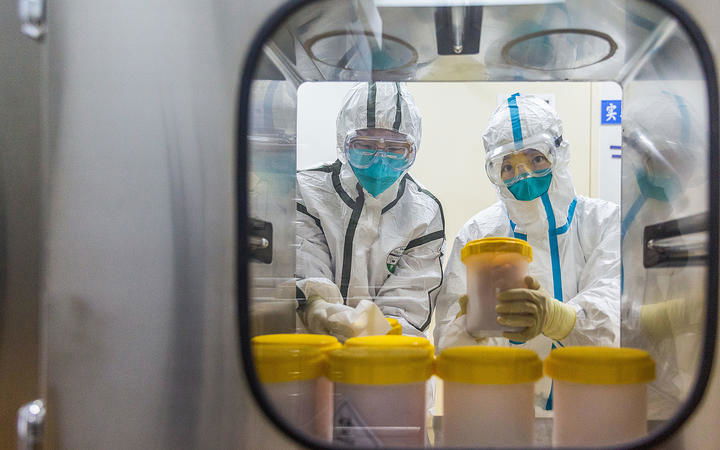
Staff members receive the novel coronavirus strain transported to a laboratory of Chinese Center for Disease Control and Prevention, in Beijing, on February 25, 2020. Photo: Liu Peicheng / Xinhua / AFP
While medicine and epidemiology have unravelled the fundamentals of when carriers are most infectious and how the disease spreads, virologists like Prof Holmes can make deductions about how long it has been circulating and what it’s likely to do next.
Different strains of Covid-19 can all be tracked to a common “ancestor”, the implication being that this ancestor virus marks the general period during which the virus “jumped” from animals to humans.
“If you look at the genomic data, you can try and date when they diverged and if you do that, the most likely ancestor date is around about November last year,” Prof Holmes says.
A quick biology lesson
A quick and basic biology lesson on the virus goes like this: a virus exists in an animal – the leading candidate is a bat. At some point the bat virus is transmitted to another animal that is in closer contact with humans and then some time after that, the virus infects its first human. Maybe a fragment of faeces or mucus from the animal is absorbed, or it could be transmitted after being eaten.
It’s not possible to know precisely how long before being detected in humans this transmission happened. Prof Holmes uses the example of HIV which is believed to have jumped from chimpanzees to humans in the 1920s, maybe while the animal was being butchered for food, but only became widely known in the 1980s when it spread to a level that allowed patterns to become evident in the community.
In the case of Covid-19, several mutations may have existed in humans prior to November 2019, but for one reason or another they died out, leaving just one powerful mutation. Perhaps that mutation was caught by a superspreader, leading to the current pandemic.
Enter the superspreader
That’s where the now infamous Huanan Seafood Wholesale Market in Wuhan comes in.
While it’s possible that one of the animals on sale at that market was the creature that transmitted SARS-CoV-2 to humans, that does not have to be the case.
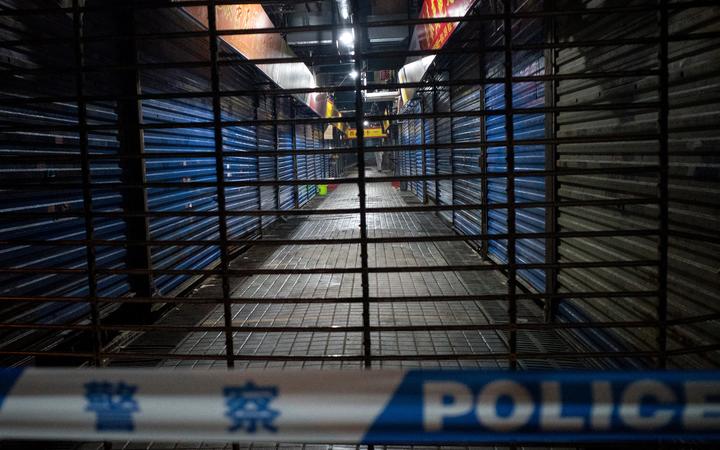
The Wuhan Hygiene Emergency Response Team conducts searches on the closed Huanan Seafood Wholesale Market in the Hubei Province, on January 11, 2020. Photo: Noel Celis / AFP
Perhaps the virus was transmitted to humans somewhere else and the market was merely the site of a superspreader event that “amplified” the disease into the wider community.
On 31 December, the Wuhan Municipal Health Commission formally announced an outbreak of what we now know as SARS-Cov-2. Two days later lab reports confirmed that 41 people had been hospitalised with the disease.
Yiwan Lee remembers watching frustration rise on social media as evidence gathered that something was seriously wrong in Wuhan, but China’s official media was silent. At other times stories appeared briefly, only to be hidden behind the country’s Great Firewall just as fast.
“On the one hand what we saw on TV made everything look great,” she says. “Then when you switch to your phone, everyone is posting about how terrible the situation is.”
Heading into the heart of the crisis
Early on 23 January, a few weeks after Prof Holmes had uploaded the Covid sequence to global acclaim, and just hours before Wuhan’s lockdown was due to take effect, The New York Times newspaper sent a message to its staff in China: who is willing to report from the stricken city?
Information about the virus remained sketchy and accusations that the Chinese government had not been transparent about the scale of the unfolding crisis meant having a reporter on the ground seemed the best way to learn what was going on.
With public transport out of Wuhan heaving with residents anxious to escape the city before shut down, Chris Buckley – an experienced journalist for the Times, fluent in Chinese, with a PhD in Chinese Communist Party history – began heading the other way.
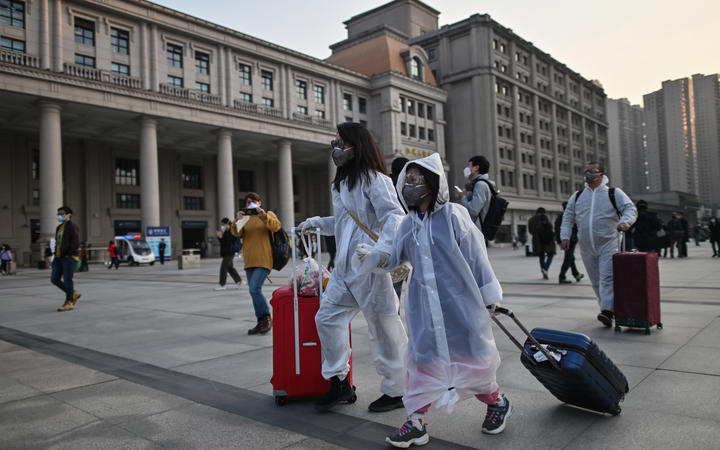
People wearing protective clothing and masks arrive at Hankou Railway Station to board one of the first trains to leave Wuhan after an outbound travel ban was lifted on April 8, 2020. Photo: Hector Retamal / AFP
“I thought it would be a big story, but I don’t think anybody anticipated what would happen,” says Buckley, who spent more than 70 days confined to the city. “I threw some clothes in a bag, some hand sanitiser, and I thought I would be there for a week, maybe two.”
It must have felt like heading towards a war zone and the mood on the train was tense but resigned, Buckley remembers. A fellow passenger noted pragmatically “If you are the panicky type you are not on this train”.
Buckley wasn’t panicky. Originally from Sydney, he had been a China resident for most of the past three decades, until being forced to leave in May. Over the years he had covered SARS, earthquakes and the suppression of Uyghurs in Xinjiang. Surely Wuhan was just another assignment.
‘A pretty big deal’
Even in authoritarian China, shutting down a city was “a pretty big deal” Buckley reflects now. And doing so in Wuhan – a huge industrial city and transport hub that straddled the famous Yangze River, with a population of more than 11 million – the task seemed monumental.
Knowing what we do now about the rapid spread of Covid-19, the decision seems prophetic.
“I just couldn’t imagine how it was going to work,” he says. “Even a government as powerful as China’s under Xi Jinping didn’t arrive at that decision [to lock down the city] lightly.”
As the bullet train pulled into Wuhan that day, Buckley suspected he may be about to walk into a large-scale security operation designed to control population movements. But the city was calm. He caught a taxi to a nearby hospital and found people lining up at fever clinics to be tested.
Medical supplies are still not enough in Wuhan. But food donations have been arriving, and this neighborhood party committee was handing out residents bags of chilies donated from Hainan. There might be a different vegetable tomorrow, they said. pic.twitter.com/lLH0a6FQq8
— Chris Buckley 储百亮 (@ChuBailiang) February 11, 2020
As he spoke with them, Buckley noted a wide “backwash of anger” against the local government.
“There was a conviction that the government had played down or hidden some of the evidence that the virus was spreading,” he says. “People in the city had acknowledged for some time that there were growing numbers of people going to fever clinics, and experiencing these pneumonia-like symptoms that could be very, very severe in some cases.”
But the story of coronavirus in China is not just a story of complacency, Buckley believes.
“It’s a much more complicated set of issues. You do have heroes, you have doctors in Wuhan and other parts of China who really pushed [to get the situation addressed].”
What happens next
Finding that animal or species that transferred Covid-19 to humans is of critical importance, Prof Holmes believes, and the World Health Organisation has released a plan to search for the zoonotic origins of the virus.
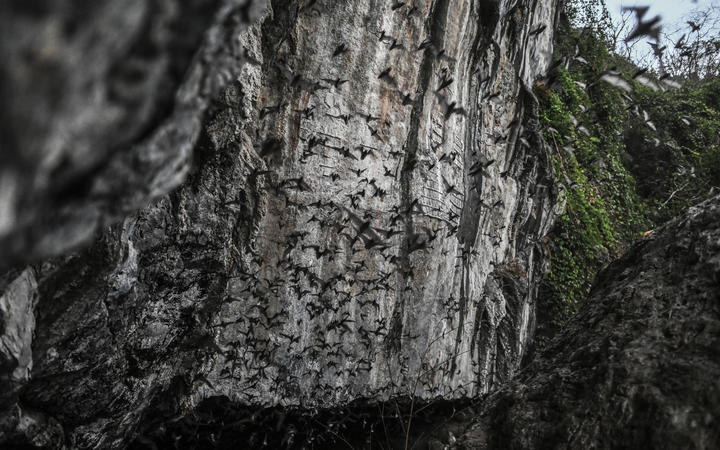
Bats are fascinating mammals but they often play a key role in zoonotic transfer of disease. Photo: Ye Aung Thu / AFP
Right now, the Covid-19 genome is around 96 percent compatible with coronaviruses that have known animal hosts. But that’s just not close enough. It equates to about 30 years of missing evolution.
“The key thing to do is fill in that gap,” says Prof Holmes. “Thirty-or-so years of missing ‘stuff’.”
The WHO investigators – alongside the work Chinese experts are already doing – will focus on hunting for an animal with a coronavirus that is a 99 percent match.
That’s where the needle in a haystack metaphor comes in – the task ahead is monumental and the only way to attack it is with old-fashioned detective work: sampling animals until a match is found. It’s hard, hard work with no guaranteed result.
“It could take years and it’s possible we might never find it,” says Prof Holmes, using the example of Hepatitis C, a virus which affects millions and has done for decades, “but we still don’t know where it came from”.
The link to Ebola and Zika
The rise of so-called zoonotic diseases over recent decades – from Ebola and HIV to SARS, Zika and more – is not just bad luck. It relates directly to the way we live now, Prof Holmes argues.
While humans have always existed alongside wild, farmed and domesticated animals, with potential for virus transmission ever present, the difference now is profound, he believes.
“We live in these mega cities with globally connected populations, we expose ourselves to wildlife more by deforestation and the wildlife trade,” he says. “All those things are fuelling these pandemics.”
He argues a focus on finding Patient Zero is misplaced effort. The more important task is to find out what species gave rise to the virus.
“We must find out where it happened and then cut that route off. If it’s the wildlife trade, we need to clamp down on that. If it’s farming, we need to commit to cut down on those things. We need to find out so we can plug the holes.”
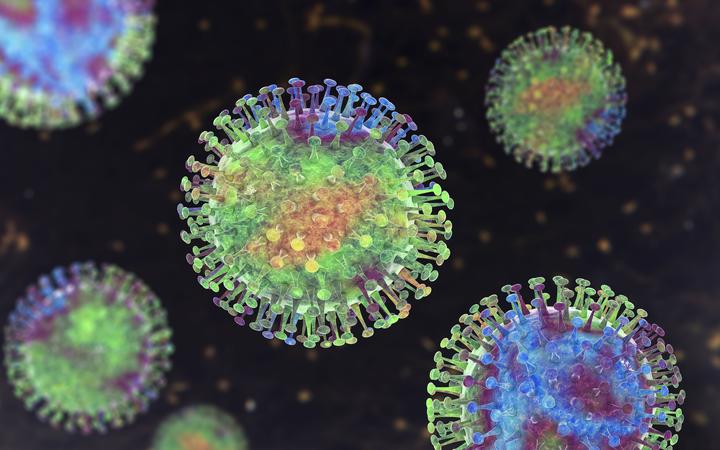
An illustration of the virus that causes Covid-19. Photo: AFP
Law, not just science, is the next step
This is a topic that Katie Woolaston, a wildlife lawyer from Queensland University of Technology, is passionate about. She sees a pivotal role for law, alongside science, in reducing the future risk of pandemics.
“The risk of pandemics is increasing because of our relationship with biodiversity and our relationship with the environment,” she says, noting climate change, wildlife trade and agricultural expansion as factors pushing humans into animal spaces.
Woolaston – who co-authored a report for the Intergovernmental Science-Policy Platform on Biodiversity and Ecosystem Services (IPBES) into the animal origins of pandemics – argues that stronger environmental laws can play a role in preventing future pandemics. She advocates for a “one health” approach in which policy considers human health alongside environmental health and economic development.
What does the future look like?
Woolaston and Prof Holmes are at pains to convey the idea that preparing for the next pandemic is embedded within these environmental concerns.
There is no simple medical answer that can save us. Even a vaccine can’t offer an ongoing solution because viruses mutate, and zoonotic transmission has an almost limitless crucible of potential future viruses to draw from.
EcoHealth Alliance research estimates that there are 1.67 million unknown viruses in the wild. https://t.co/dYJezw3b4S
— EcoHealth Alliance (@EcoHealthNYC) March 25, 2020
“I’ve heard the narrative that this is a once in 100-year pandemic, a jolt to the system,” Prof Holmes says. “But that’s just completely wrong. The rate at which these things are occurring is escalating. We will not wait 100 years for the next one. It could be in 10 years. Or next year.”
Prof Holmes hopes that the dramatic impact of Covid-19 will spur governments and populations into action. “I can’t believe as a species we would let this happen again without learning the lessons,” he says. “We absolutely have to and I’m reasonably confident that we will.”
In the meantime, only one thing is certain: Covid-19 is not done with us yet.
-ABC
